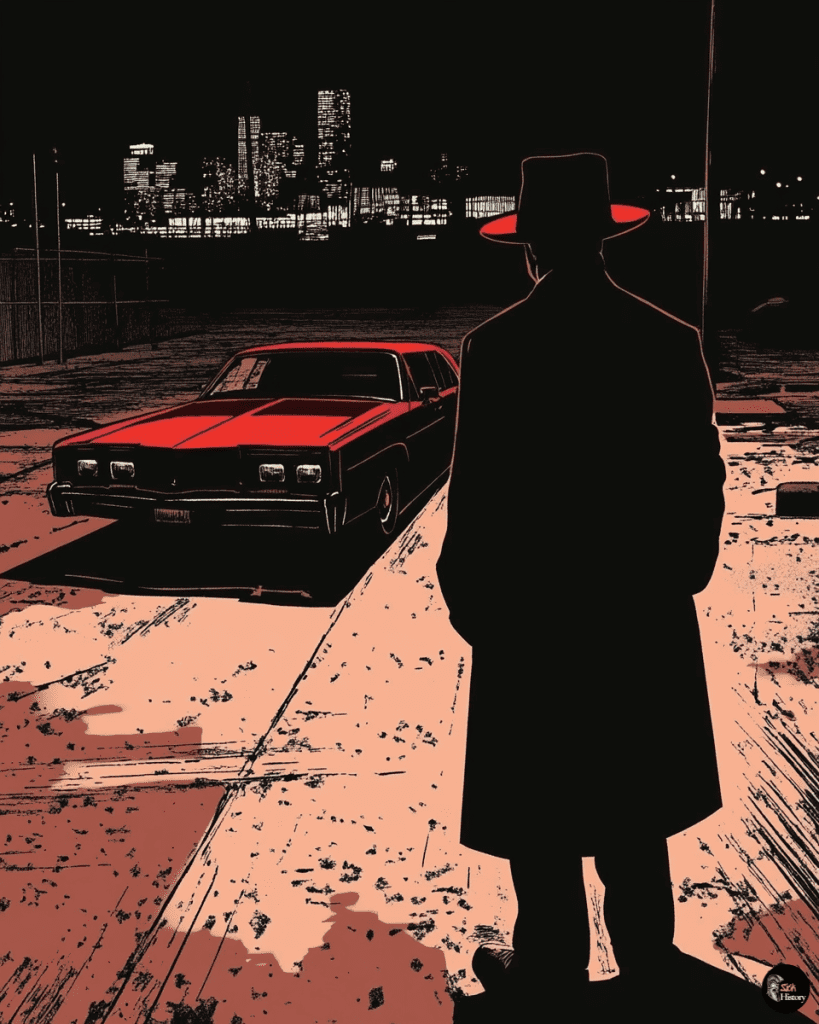The disappearance of Jimmy Hoffa remains one of America’s most intriguing unsolved mysteries. On July 30, 1975, the former Teamsters union leader vanished without a trace after leaving for a meeting at a restaurant in Detroit.
Despite extensive investigations spanning nearly five decades, Hoffa’s fate continues to baffle authorities and captivate the public imagination.
Hoffa’s disappearance has long been linked to organized crime. As a powerful labor leader, he had connections to both the Teamsters Union and the mafia.
Theories abound about his fate, with speculation ranging from mob hits to government conspiracies. The case has spawned numerous books, films, and documentaries, each offering its own interpretation of events.
Over the years, various leads have emerged, including deathbed confessions and purported burial sites.
The FBI has conducted searches based on these tips, but Hoffa’s remains have never been found.
The enduring mystery surrounding his disappearance continues to fuel public interest and speculation about what really happened to Jimmy Hoffa on that fateful summer day in 1975.
The Disappearance of Jimmy Hoffa
Jimmy Hoffa vanished on July 30, 1975, sparking one of the most infamous unsolved mysteries in American history. The former Teamsters president’s disappearance involved a complex web of organized crime connections and suspicious circumstances.
Timeline of Events on July 30, 1975
At 1:15 PM, Hoffa called his wife from a payphone, stating Anthony Giacalone hadn’t shown up for their meeting at the Machus Red Fox restaurant in Bloomfield Township, Michigan.
Hoffa was last seen at 2:45 PM in the restaurant’s parking lot, getting into a maroon Mercury Marquis.
By 7:00 PM, Hoffa’s family reported him missing.
Police found his unlocked car in the parking lot, with no signs of a struggle. Hoffa’s wallet and car keys were missing.
Investigators later discovered Hoffa had also planned to meet Anthony Provenzano, a Teamsters official with mob ties, that day.
Neither Giacalone nor Provenzano admitted to having scheduled meetings with Hoffa.
Key Figures and Suspects
- Anthony Giacalone: Detroit mobster Hoffa believed he was meeting
- Anthony Provenzano: New Jersey Teamsters leader and alleged mafia member
- Charles “Chuckie” O’Brien: Hoffa’s foster son, suspected of driving the Mercury Marquis
- Salvatore “Sally Bugs” Briguglio: Provenzano associate implicated in later accounts
Investigators questioned these individuals, but no charges were ever filed. Deathbed confessions and new leads have periodically reignited the investigation, though Hoffa’s fate remains unconfirmed.
Mafia Involvement and Theories
The prevailing theory suggests mafia involvement in Hoffa’s disappearance. Hoffa’s attempts to regain control of the Teamsters after his prison release likely angered organized crime figures who had gained influence in his absence.
Popular theories include:
- Hoffa was killed, and his body was disposed of in a mob-controlled location
- He was cremated or buried at an unknown site
- His remains were mixed into concrete used in large construction projects
Despite numerous searches and excavations, including a 2021 FBI investigation in New Jersey, Hoffa’s body has never been found.
The case remains open, with new information occasionally surfacing but failing to definitively solve the decades-old mystery.
Investigation and Legacy
The disappearance of Jimmy Hoffa sparked one of the most extensive and perplexing investigations in American history. It left an indelible mark on the Teamsters Union and became deeply embedded in popular culture.
FBI’s Efforts and Challenges
The FBI launched an intensive search for Hoffa immediately after his disappearance on July 30, 1975.
Agents pursued numerous leads and theories, including possible mob involvement and connections to organized crime figures.
The investigation faced significant obstacles. Potential witnesses were often uncooperative or fearful of retaliation.
Physical evidence was scarce, complicating efforts to build a case.
Over the years, the FBI conducted searches at various locations based on tips and alleged deathbed confessions.
In 2021, agents searched a plot of land in New Jersey following new information, but no breakthrough was achieved.
Impact on Teamsters Union
Hoffa’s disappearance had profound effects on the Teamsters Union. His absence created a leadership vacuum and intensified internal power struggles.
The union’s reputation suffered due to its perceived connections with organized crime. This led to increased scrutiny from law enforcement and government agencies.
Efforts to reform the Teamsters gained momentum after Hoffa’s disappearance. New leaders sought to distance the union from its troubled past and improve its public image.
Cultural Imprint and Unsolved Mystery
The Hoffa case captivated the public imagination, becoming a symbol of unsolved mysteries and mob intrigue.
It inspired numerous books, movies, and documentaries.
Hoffa’s disappearance entered the popular lexicon, with phrases like “Hoffa treatment” becoming synonymous with mysterious disappearances.
Theories about Hoffa’s fate continue to circulate decades later.
Some speculate he was buried under a stadium, while others claim he was cremated or disposed of in various ways.
The enduring mystery has taken on a life of its own, transcending the man himself to become a cultural phenomenon that continues to fascinate the public.

